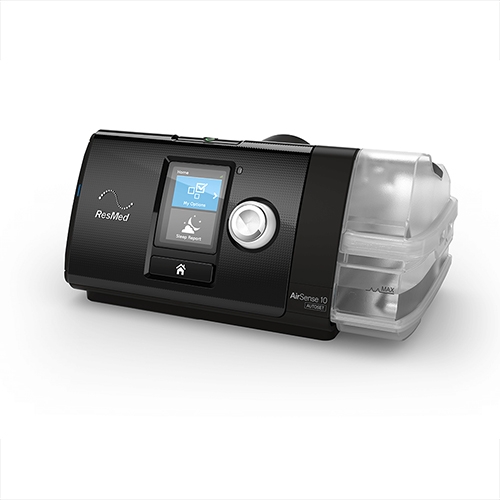In an era of heightened health awareness, a silent epidemic continues to affect millions worldwide: sleep-disordered breathing. This umbrella term for a group of conditions characterized by abnormal breathing patterns during sleep poses significant health risks, yet often goes undiagnosed. While effective treatments exist, recent headlines surrounding a major recall of a popular sleep apnea device have cast a spotlight on the challenges and advancements in managing this pervasive disorder. This article delves into the intricacies of sleep-disordered breathing, explores the critical role of treatment, and examines the impact of recent news on patient care and the future of sleep medicine.
Sleep-disordered breathing (SDB) encompasses a spectrum of respiratory issues that occur during sleep, ranging from simple snoring to more severe conditions like obstructive sleep apnea (OSA) and central sleep apnea (CSA). Obstructive sleep apnea, the most common form, occurs when the muscles in the back of the throat relax intermittently, blocking the airway and causing pauses in breathing. Central sleep apnea is less common and involves a failure of the brain to send proper signals to the muscles that control breathing. These repeated interruptions in breathing can lead to a cascade of health problems.
The symptoms of sleep-disordered breathing are often subtle and may be first noticed by a bed partner. Loud snoring, gasping or choking sounds during sleep, and morning headaches are common indicators. However, the daytime consequences can be just as telling: excessive daytime sleepiness, difficulty concentrating, irritability, and a general feeling of fatigue are hallmark signs. If left untreated, SDB can have serious and long-term health consequences, including an increased risk of hypertension, heart disease, stroke, type 2 diabetes, and other chronic conditions. The fragmented sleep and lack of oxygen strain the cardiovascular system and disrupt the body's metabolic processes.
The Gold Standard and a Public Health Crisis: The Role of CPAP Therapy
For decades, the gold standard for treating moderate to severe obstructive sleep apnea has been Continuous Positive Airway Pressure, or CPAP, therapy. A CPAP machine delivers a constant stream of pressurized air through a mask, preventing the airway from collapsing and allowing for uninterrupted breathing and a restful night's sleep. For countless individuals, CPAP therapy has been life-changing, alleviating symptoms and reducing the long-term health risks associated with sleep apnea.
However, the world of sleep medicine was recently shaken by a significant public health issue involving one of the largest manufacturers of CPAP devices. In recent years, Philips Respironics initiated a massive recall of millions of its CPAP, BiPAP, and ventilator devices due to the potential breakdown of sound-abatement foam used in the machines. It was discovered that this foam could degrade into particles that could be inhaled or ingested by the user, posing potential health risks, including toxic and carcinogenic effects.
This news sent shockwaves through the sleep apnea community, leaving patients and healthcare providers in a difficult position. The recall led to a flood of lawsuits and regulatory scrutiny, culminating in a consent decree with the U.S. Department of Justice and the Food and Drug Administration (FDA) that required the company to halt the production and sale of new CPAP and BiPAP devices from certain facilities in the United States until specific safety requirements are met. Recent developments in 2024 and early 2025 have seen significant financial settlements aimed at compensating affected users, but the long-term health implications for those exposed to the degraded foam remain a serious concern.
This ongoing saga has highlighted the critical importance of device safety and regulatory oversight in the medical equipment industry. It has also underscored the reliance of millions on these devices for their nightly survival and well-being. For many patients, the recall has created a period of uncertainty and anxiety, with some forced to choose between using a potentially risky device or forgoing treatment altogether.
Beyond the Headlines: Innovations and the Future of Sleep Apnea Treatment
While the Philips recall has been a dominant news story, the field of sleep medicine continues to evolve, with ongoing innovations aimed at improving the efficacy and comfort of SDB treatments. Researchers and engineers are constantly working to develop more patient-friendly alternatives to traditional CPAP therapy.
Recent advancements include the development of smaller, quieter, and more technologically advanced CPAP machines. Smart features, such as automatic pressure adjustments and data tracking through mobile apps, are becoming standard, allowing for more personalized and effective therapy. Mask technology has also seen significant improvements, with a wider variety of less intrusive and more comfortable designs available, addressing one of the most common complaints of CPAP users.
Furthermore, alternative treatments are gaining traction. Oral appliances, which reposition the jaw or tongue to keep the airway open, are an effective option for some individuals with mild to moderate sleep apnea. For those who cannot tolerate CPAP, surgical options may be considered. A more recent innovation is hypoglossal nerve stimulation, a surgically implanted device that works like a pacemaker for the tongue, stimulating the nerve to move the tongue forward and keep the airway open during sleep.
The journey for individuals with sleep-disordered breathing is often a long and challenging one, from recognizing the subtle symptoms to finding a treatment that works. The recent news surrounding CPAP devices has added a layer of complexity to this journey. However, it has also brought a renewed focus on patient safety and the importance of continued innovation in the field. As awareness of this silent epidemic grows, so too does the hope for more effective, comfortable, and accessible treatments that will allow millions to finally get the safe and restful sleep they need to lead healthy and productive lives.
Media Contact
Company Name: Oxygen Express
Contact Person: Media Relations
Email:Send Email
Phone: +852 53277191
Address: Unit 20, 8/F, Por Yen Building 478 Castle Peak Road, Cheung Sha Wan, Kowloon
City: Hong Kong
Country: China
Website: https://o2xpress.com/

